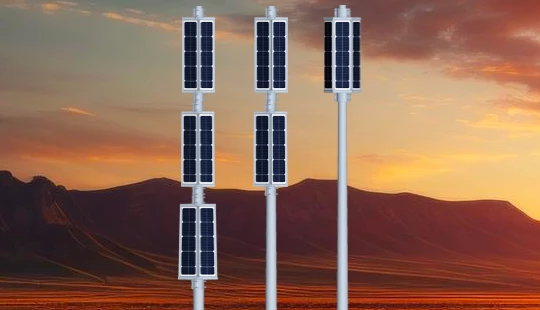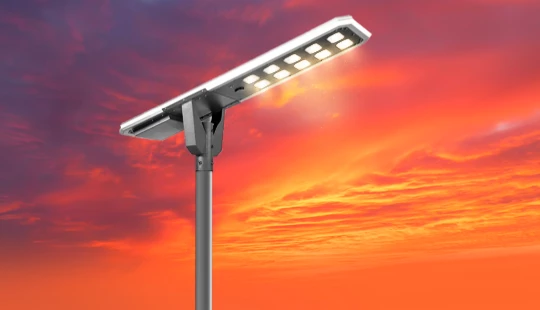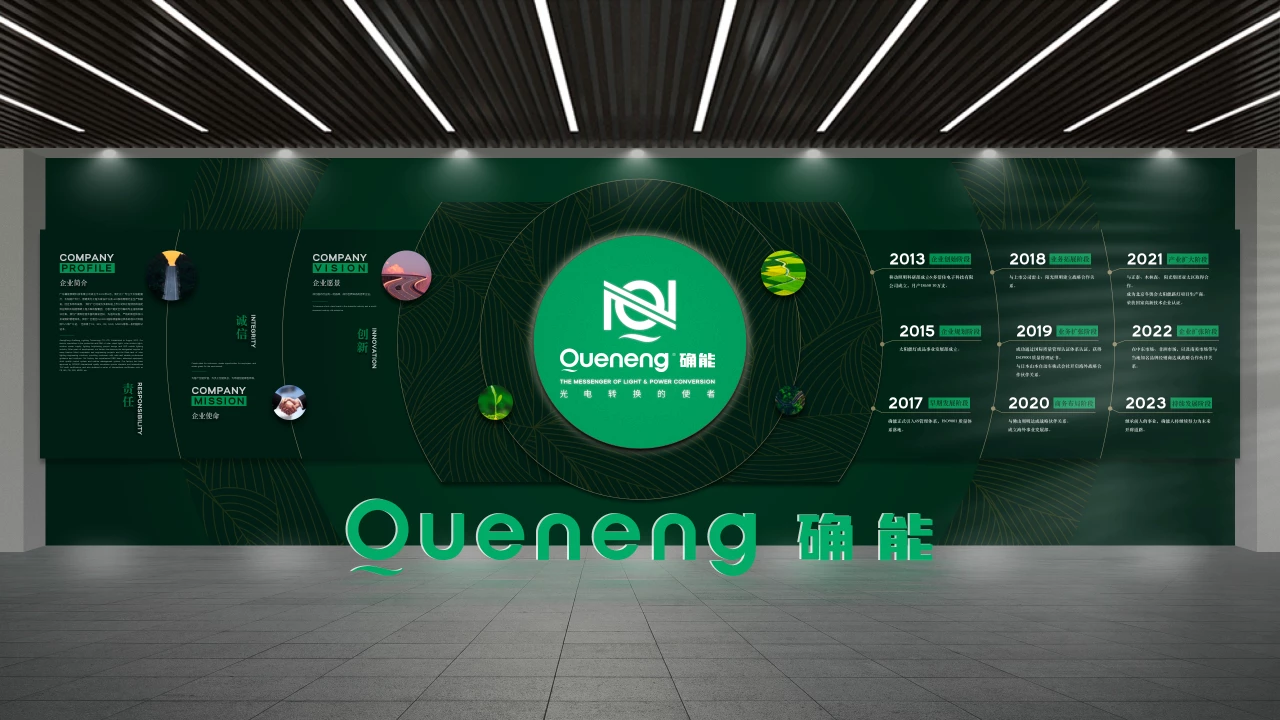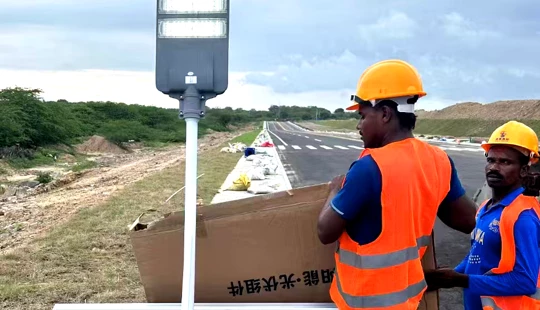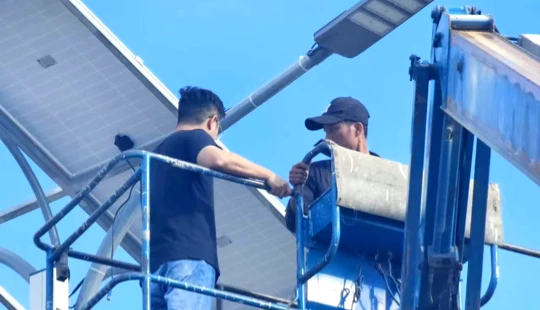How to Choose the difference between MPPT and PWM manufacturer and supplier ?
In the rapidly expanding world of solar energy, efficiency and reliability are paramount. Whether you're powering a simple garden light or an elaborate solar street lighting system, the core components that regulate your power flow are critical. Among these, the solar charge controller stands as the unsung hero, acting as the brain that manages the electricity from your solar panels to your batteries. But when it comes to choosing the right charge controller, two primary technologies dominate the market: Pulse Width Modulation (PWM) and Maximum Power Point Tracking (MPPT). Understanding the fundamental difference between MPPT and PWM is not just about technical specifications; it's about optimizing your solar investment and ensuring long-term performance. This comprehensive guide will demystify these technologies, explore their applications, and, crucially, help you navigate the process of selecting a reputable MPPT or PWM manufacturer and supplier to power your sustainable future.
Understanding Solar Charge Controllers: The Brains of Your Solar System
What is a Solar Charge Controller?
A solar charge controller is an essential component in almost all solar power systems that use batteries. Its primary function is to regulate the voltage and current coming from the solar panels going to the battery bank, preventing overcharging and excessive discharging, which can severely damage or shorten the life of your batteries. Think of it as a sophisticated traffic cop for your solar electricity, directing power safely and efficiently. Without a charge controller, your batteries could be subjected to harmful voltage fluctuations, leading to reduced lifespan, decreased performance, or even dangerous overheating. A quality charge controller ensures your solar power system operates optimally and extends the longevity of your valuable battery bank, a critical consideration for any solar lighting project or off-grid power solution.
PWM vs. MPPT: A Deep Dive into Technology Differences
The choice between a PWM and an MPPT charge controller significantly impacts the efficiency, cost, and overall performance of your solar energy system. While both perform the vital role of battery regulation, they employ distinct methods to achieve this, leading to varied power harvesting capabilities.
Pulse Width Modulation (PWM) Charge Controllers
PWM charge controllers are the more traditional and simpler of the two technologies. They work by connecting the solar panel array directly to the battery bank. When the battery reaches a certain voltage, the PWM controller reduces the charging current in a series of short pulses, hence 'pulse width modulation.' It essentially acts like a switch, rapidly turning the current on and off to maintain a constant voltage. When the battery is full, the controller stops charging. This method works best when the solar panel's nominal voltage closely matches the battery bank's nominal voltage (e.g., a 12V panel charging a 12V battery). While effective and cost-efficient for smaller solar setups, the main limitation of PWM is that it forces the solar panel to operate at the battery's voltage, rather than the panel's maximum power output voltage. This means potential energy from the solar panel is often left unharvested, particularly in colder temperatures or when the panel's voltage significantly exceeds the battery's.
Maximum Power Point Tracking (MPPT) Charge Controllers
MPPT charge controllers represent a significant leap in solar charging technology. Unlike PWM, an MPPT controller actively tracks the 'maximum power point' (MPP) of the solar array, which is the optimal combination of voltage and current at which the panels produce the maximum possible power. It then converts this higher voltage, lower current output from the panels into a lower voltage, higher current output suitable for charging the batteries, much like a smart DC-DC converter. This capability allows MPPT controllers to efficiently handle situations where the solar panel's nominal voltage is much higher than the battery bank's nominal voltage (e.g., using 60-cell solar panels designed for grid-tie applications to charge a 12V or 24V battery bank). By continuously adjusting to changing light and temperature conditions, MPPT controllers can harvest up to 20-45% more power than PWM controllers in varying conditions, especially during cloudy weather or cold temperatures, making them ideal for high-performance solar solutions like sophisticated solar street lights and large-scale off-grid systems.
Key Technical Differences and Efficiency
The fundamental difference lies in how they manage voltage. A PWM controller operates like a simple switch, essentially clipping the panel's voltage down to match the battery. If a 12V solar panel typically produces 17V-18V at its maximum power point, a PWM controller will effectively pull that voltage down to the battery's current voltage (e.g., 13V-14V during charging), losing the excess voltage as wasted potential. This can lead to efficiencies typically ranging from 70-80% in ideal conditions.
In contrast, an MPPT controller employs a more complex algorithm. It seeks the specific voltage and current combination (the Maximum Power Point) where the solar panel delivers its highest power output. For example, if a 12V nominal panel is producing 18V and 5A (90W) at its MPP, and the battery is at 13V, the MPPT controller will convert that 90W into roughly 6.9A (90W / 13V), pushing more current into the battery at the lower voltage. This voltage conversion capability allows MPPT controllers to achieve efficiencies of 95-99%, leading to significantly more energy harvest, particularly crucial for maximizing power generation in challenging environments or for large-scale solar projects. This added efficiency translates directly into faster charging times, longer battery autonomy, and overall more reliable solar power for applications such as solar garden lights and comprehensive outdoor lighting systems.
When to Choose Which: Applications and Performance Considerations
Selecting between PWM and MPPT largely depends on the specific requirements of your solar energy system, including its size, cost considerations, and environmental conditions. Understanding their ideal applications helps in making an informed decision for your solar lighting solutions.
Ideal Scenarios for PWM Charge Controllers
PWM charge controllers are often the preferred choice for smaller, less complex solar setups where cost-effectiveness is a primary concern. They are highly suitable for systems where the solar panel's nominal voltage closely matches the battery bank's voltage. Examples include:
- Small off-grid applications: Such as basic solar lawn lights, camping setups, or RV systems where the power demand is low.
- Maintenance charging: For keeping batteries topped up, like in a boat or a recreational vehicle that isn't used frequently.
- Warm climates: In warmer environments, the voltage difference between the panel's MPP and the battery voltage is less pronounced, reducing the energy loss associated with PWM.
- Budget-conscious projects: For projects where every penny counts and maximizing efficiency is not the absolute top priority.
For systems up to 200W, a well-matched PWM controller can often provide sufficient performance at a lower initial investment, making them a popular choice for simple and cost-effective solar solutions.
Ideal Scenarios for MPPT Charge Controllers
MPPT charge controllers truly shine in more demanding, higher-power solar applications where maximizing energy harvest and system efficiency is paramount. They are particularly advantageous in situations where there's a significant voltage difference between the solar array and the battery bank. These include:
- Large-scale solar installations: Such as commercial solar street lighting projects, large residential off-grid systems, or grid-tied solar setups with battery backup, where every watt of power generation matters.
- High-voltage solar arrays: When using standard grid-tie solar panels (e.g., 60-cell or 72-cell panels with higher operating voltages like 30V-40V) to charge lower-voltage battery banks (12V, 24V, 48V). The MPPT's ability to step down voltage while increasing current is critical here.
- Cold climates: Solar panels perform better (produce higher voltage) in colder temperatures. An MPPT controller can effectively capture this increased voltage and convert it into usable charging current, providing a significant advantage in energy harvest.
- Complex or critical systems: For applications like remote telecommunication stations, advanced solar home systems, or intelligent solar street lights where consistent, reliable power is essential, and maximizing power output is a key performance indicator.
- Expanding systems: If you plan to expand your solar array in the future, an MPPT controller offers greater flexibility in panel configuration.
Investing in an MPPT controller for these scenarios leads to faster battery charging, reduced need for additional solar panels, and overall greater system resilience and efficiency, ly offering a superior return on investment for your solar energy projects.
Impact on Solar Panel and Battery Lifespan
The choice of charge controller also has a direct bearing on the longevity and health of your solar panels and, more critically, your batteries. A high-quality charge controller, particularly an MPPT, employs advanced charging algorithms, often including multi-stage charging (bulk, absorption, float, equalization). This intelligent charging process ensures that batteries are charged efficiently without being overstressed, which is crucial for extending their lifespan.
Overcharging leads to electrolyte boiling in lead-acid batteries and can damage lithium batteries, while undercharging leads to sulfation and reduced capacity. MPPT controllers, with their precise voltage regulation and efficient power conversion, provide a more 'gentle' and optimized charge cycle. By consistently operating the solar panels at their maximum power point, they also ensure the panels are utilized to their fullest potential, indirectly contributing to their long-term performance stability. For solar systems deployed in challenging environments, such as solar street lights exposed to varying weather conditions, the robust and intelligent charging management provided by MPPT controllers is indispensable for maximizing the lifespan of both the solar panels and the battery storage, thereby reducing maintenance costs and ensuring reliable operation for years to come.
Factors to Consider When Choosing an MPPT or PWM Manufacturer/Supplier
Choosing the right MPPT or PWM manufacturer and supplier is as crucial as selecting the technology itself. A reliable partner ensures product quality, performance, and long-term support for your solar energy investments. When evaluating potential suppliers for your solar lighting solutions or broader solar projects, consider the following key factors:
Expertise and Experience
Look for manufacturers with a deep understanding of solar technology and a proven track record in the industry. Experience often translates into reliable product design, manufacturing processes, and problem-solving capabilities. A company that has been in the solar industry for a significant period, focusing on specific products like solar street lights or comprehensive solar solutions, is more likely to offer robust and tested charge controllers. GuangDong Queneng Lighting Technology Co., Ltd., founded in 2013, has accumulated years of specialized experience in solar lighting and related photovoltaic products, establishing itself as an expert in the field.
Product Quality and Certifications
Quality is non-negotiable. Reputable manufacturers adhere to stringent quality control standards throughout their production process. Verify that their charge controllers comply with international quality and safety certifications. These certifications are independent validations of product performance, safety, and environmental compliance. For instance, Queneng Lighting is approved by ISO 9001 international quality assurance system standard and international TÜV audit certification, and has obtained a series of international certificates such as CE, UL, BIS, CB, SGS, and MSDS. Such comprehensive certifications are a testament to our unwavering commitment to producing high-quality and reliable solar charge controllers and lighting products.
R&D Capabilities and Innovation
The solar industry is dynamic, with continuous advancements in technology. A manufacturer with strong research and development (R&D) capabilities is better positioned to offer cutting-edge products that are more efficient, durable, and feature-rich. An experienced R&D team ensures that the charge controllers incorporate the latest technological improvements for maximum power point tracking accuracy, improved battery charging algorithms, and enhanced communication features. Queneng Lighting prides itself on an experienced R&D team that constantly innovates to provide superior solar energy management solutions, ensuring our products, including those for solar street lights and solar garden lights, remain at the forefront of the industry.
Customer Support and After-Sales Service
Reliable customer support and comprehensive after-sales service are vital for any long-term partnership. Inquire about warranty policies, technical support availability, and responsiveness to inquiries. A manufacturer that offers excellent support demonstrates confidence in its products and commitment to its customers' success. This includes clear documentation, troubleshooting guides, and readily available technical assistance for any issues that may arise with your solar charge controller or entire solar system.
Customization and Solution Integration
For large-scale projects or unique applications, the ability of a manufacturer to provide customized solutions or integrate their products seamlessly into a broader system is a significant advantage. Some projects, such as specialized lighting for public spaces or industrial applications, may require charge controllers with specific voltage ratings, communication protocols, or environmental protections. A flexible manufacturer can work with you to tailor solutions that perfectly fit your project's needs. Queneng Lighting operates as a solar lighting engineering solutions think tank, providing customers with safe and reliable professional guidance and customized solutions for their diverse lighting and power requirements.
Supply Chain Reliability and Production Capacity
For businesses or large projects, ensuring a stable supply of components is critical. A manufacturer with a robust supply chain and significant production capacity can meet demand consistently and deliver products on schedule. This minimizes delays and keeps your projects on track. Queneng Lighting has grown to become the designated supplier of many famous listed companies and engineering projects, reflecting our robust production capabilities and reliable supply chain, ensuring that whether you need MPPT or PWM controllers for solar street lights or any other solar product, we can meet your demands efficiently.
Why GuangDong Queneng Lighting Technology Co., Ltd. Stands Out as Your Preferred Partner
Choosing the right partner for your solar charge controllers is a decision that impacts the long-term success and efficiency of your solar power systems. GuangDong Queneng Lighting Technology Co., Ltd. is not just a supplier; we are a comprehensive solution provider committed to excellence in the solar lighting industry.
Our Commitment to Quality and Innovation
At Queneng, quality is at the core of everything we do. Our adherence to ISO 9001 international quality assurance standards and comprehensive certifications like TÜV, CE, UL, BIS, CB, SGS, and MSDS underscore our dedication to manufacturing products that meet the highest global standards. Our experienced R&D team is continuously pushing the boundaries of solar technology, ensuring that our MPPT and PWM charge controllers, along with our full range of solar lighting products, incorporate the latest advancements for superior performance and durability. This commitment to innovation means our products offer optimal power harvesting and efficient battery management, crucial for the longevity of your solar street lights, solar garden lights, and other solar installations.
Comprehensive Solar Lighting Solutions
Beyond just charge controllers, Queneng Lighting offers a vast portfolio of solar products, including solar street lights, solar spotlights, solar garden lights, solar lawn lights, solar pillar lights, solar photovoltaic panels, portable outdoor power supplies, and batteries. Our expertise extends to lighting project design, allowing us to provide integrated, end-to-end solar lighting engineering solutions. This holistic approach means we understand how each component, especially the charge controller, fits into the larger system, enabling us to provide tailored advice and optimal product recommendations for your specific needs, whether for a small residential project or a large-scale urban development.
Trusted Partnerships and Global Recognition
Since our founding in 2013, Queneng Lighting has built a reputation for reliability and trust. Our track record as a designated supplier for numerous famous listed companies and engineering projects speaks volumes about our product consistency, production capacity, and ability to deliver on complex requirements. We are not just selling products; we are providing safe and reliable professional guidance and solutions, becoming a trusted think tank for solar lighting engineering. Partnering with Queneng means collaborating with a leader in the solar lighting industry, ensuring you receive not only top-tier MPPT and PWM charge controllers but also unparalleled support and expertise for your entire solar journey.
Conclusion
The decision between MPPT and PWM charge controllers boils down to understanding your specific solar energy needs, system size, and budget. While PWM controllers offer a cost-effective solution for simpler, smaller setups, MPPT controllers provide superior efficiency and flexibility, especially for larger, more complex systems and challenging environmental conditions. Regardless of your choice, the quality and reliability of your manufacturer and supplier are paramount. By prioritizing expertise, certifications, R&D capabilities, and comprehensive customer support, you can ensure your solar investment yields maximum returns. GuangDong Queneng Lighting Technology Co., Ltd. stands ready as your trusted partner, offering not only advanced MPPT and PWM charge controllers but also complete, high-quality solar lighting solutions backed by years of experience and a commitment to innovation and customer satisfaction. Power your future with confidence and efficiency.
FAQs
What is the main difference between MPPT and PWM charge controllers?MPPT (Maximum Power Point Tracking) controllers are more advanced, converting excess voltage from solar panels into additional current for the battery, thus maximizing power harvest (up to 99% efficiency). PWM (Pulse Width Modulation) controllers are simpler, essentially acting as a switch to regulate current by rapidly turning it on and off, matching panel voltage to battery voltage (typically 70-80% efficiency).
When should I choose a PWM controller?PWM controllers are ideal for small, low-cost solar systems where the solar panel's nominal voltage closely matches the battery's voltage (e.g., a 12V panel with a 12V battery). They are suitable for basic applications like small solar garden lights or trickle charging where maximizing efficiency isn't the primary concern.
When should I choose an MPPT controller?MPPT controllers are best for larger solar power systems, higher-voltage solar arrays, and situations where maximizing energy harvest is critical. They are highly efficient in colder climates, for long cable runs, and when using grid-tie solar panels (e.g., 60-cell panels) with lower-voltage battery banks (12V, 24V), making them perfect for solar street lights and off-grid homes.
Does MPPT really increase solar panel efficiency?Yes, MPPT controllers significantly increase the effective efficiency of your solar power system by finding and utilizing the maximum power point of the solar panel array. This means they can extract up to 20-45% more power from your panels compared to PWM controllers, especially in varying temperature conditions or when there's a voltage mismatch between panels and batteries.
How does a good charge controller affect battery life?A good charge controller protects batteries from overcharging and excessive discharging, both of which can severely reduce battery lifespan. MPPT controllers, with their advanced multi-stage charging algorithms, provide a more precise and optimized charge cycle, which helps in extending battery health and overall longevity by preventing stress and damage.
What certifications should I look for in a solar charge controller manufacturer?Look for international quality management certifications like ISO 9001, which indicates robust quality control. Product safety and performance certifications such as CE, UL, TÜV, BIS, CB, and SGS are also crucial as they verify that the controllers meet specific safety and performance standards, ensuring reliability and compliance for your solar lighting solutions.

Have more questions about our products or services?
The latest hot news you might like

Discover how solar panels power street lights, exploring the technology behind solar energy conversion, storage systems, and how solar-powered street lights are revolutionizing urban and rural lighting solutions.

Learn how AC Solar Hybrid Street Lights work, their advantages, disadvantages, system behavior in low-sunlight conditions, and why hybrid technology is ideal for regions with unstable sunlight.

Municipalities around the world are increasingly adopting solar-powered streetlights as part of their urban development strategies. Rising energy costs, the need for sustainable infrastructure, and government green initiatives are driving cities to switch from traditional street lighting to advanced LED solar streetlights.
Queneng Lighting provides municipalities with cost-effective, energy-efficient, and durable solar lighting solutions, ensuring safe and sustainable public spaces.
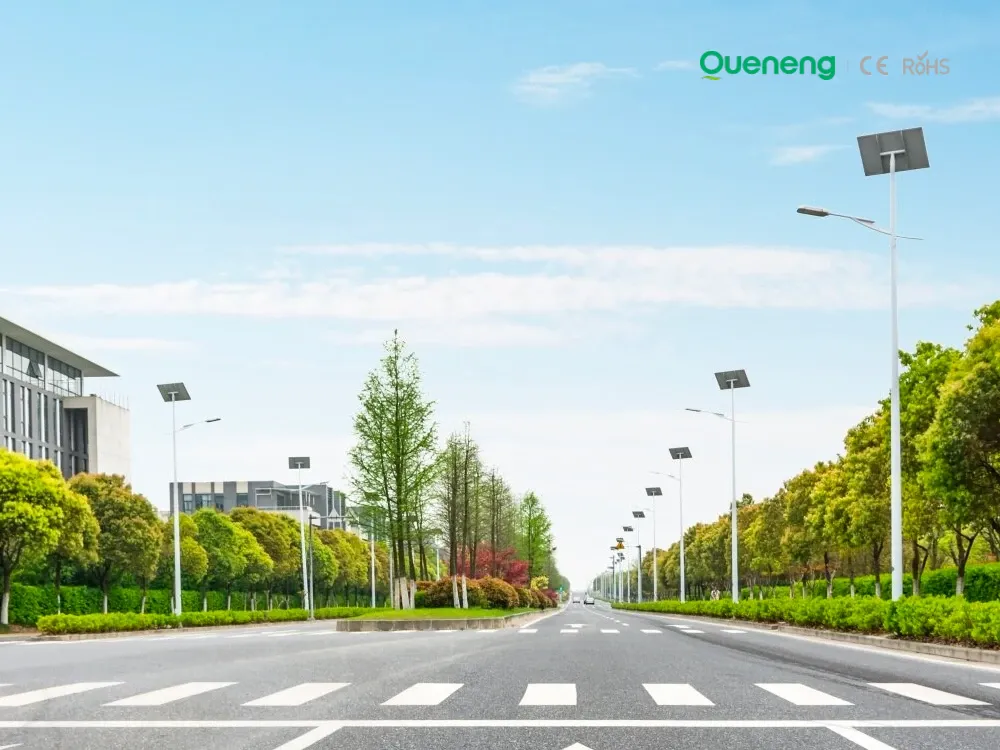
In recent years, the purchase of solar streetlights for municipalities has become a growing trend across the globe. Local governments are under pressure to reduce public expenditure, promote green energy, and create safer communities. Solar streetlights provide a reliable, cost-effective, and sustainable solution that meets these needs. Queneng Lighting, as a leading solar street lighting manufacturer, has supported multiple municipal projects worldwide with customized and energy-efficient solutions.
FAQ
Remote Areas Rural Development
Can the system operate in areas with limited sunlight?
Yes, advanced batteries store sufficient energy to function during cloudy days or extended low-sunlight periods.
How durable are solar streetlights in extreme rural conditions?
They are designed to withstand harsh weather, including heavy rains, strong winds, and extreme temperatures.
Battery Performance and Testing
What is a 24-hour self-discharge test?
What are the battery reliability test items?
2) Discharge characteristics at different rates
3) Discharge characteristics at different temperatures
4) Charging characteristics
5) Self-discharge characteristics
6) Storage characteristics
7) Over-discharge characteristics
8) Internal resistance characteristics at different temperatures
9) Temperature cycle test
10) Drop test
11) Vibration test
12) Capacity test
13) Internal resistance test
14) GMS test
15) High and low temperature impact test
16) Mechanical impact test
17) High temperature and high humidity test
Battery fundamentals and basic terms
What are the packaging materials for batteries?
2. PVC film, trademark tube
3. Connection sheet: stainless steel sheet, pure nickel sheet, nickel-plated steel sheet
4. lead sheet: stainless steel sheet (easy to solder), Pure nickel sheet (spot welding firmly)
5. plug type
6. protection components such as temperature control switches, overcurrent protector, current limiting resistors
7. cardboard boxes, cartons
8. Plastic shell type
Public Gardens and Landscape Lighting
Are there any warranty options for solar lights?
Yes, we offer a standard 2-year warranty for all our solar lighting products. The warranty covers manufacturing defects and performance issues under normal usage. For any issues outside the warranty period, we provide repair and replacement services.


Queneng's Luzhou Solar Street Light provides sustainable, energy-efficient outdoor LED lighting. Powered by solar energy, it's a cost-effective and eco-friendly solution for illuminating streets and pathways. A reliable and durable LED solar street light.

Illuminate your outdoor spaces with the Solar Street Light, a cutting-edge solution combining advanced solar technology and energy-saving LED lighting.

Discover the Lulin High-Performance Solar Street Light by Queneng, a durable and energy-saving outdoor lighting solution. Designed for efficiency and reliability, it harnesses solar power to sustainably illuminate streets and pathways. Optimize your outdoor spaces today with Queneng's innovative solar street lighting technology.

The Solar Streetlights of Luhao for Municipalities are designed to deliver reliable, energy-efficient, and cost-effective public lighting solutions. Equipped with advanced LED technology, durable lithium batteries, and high-efficiency solar panels, these streetlights provide consistent illumination for roads, parks, residential areas, and government projects.

Our professional team is ready to answer any questions and provide personalized support for your project.
You can reach us via phone or email to learn more about Queneng’s solar lighting solutions. We look forward to working with you to promote clean energy solutions!
Rest assured that your privacy is important to us, and all information provided will be handled with the utmost confidentiality.
By clicking 'Send Inquiry Now' I agree to Queneng processing my personal data.
To see how to withdraw your consent, how to control your personal data and how we process it, please see our Privacy Policy and Terms of use.
Schedule a Meeting

Book a date and time that is convenient for you and conduct the session in advance.
Have more questions about our products or services?

